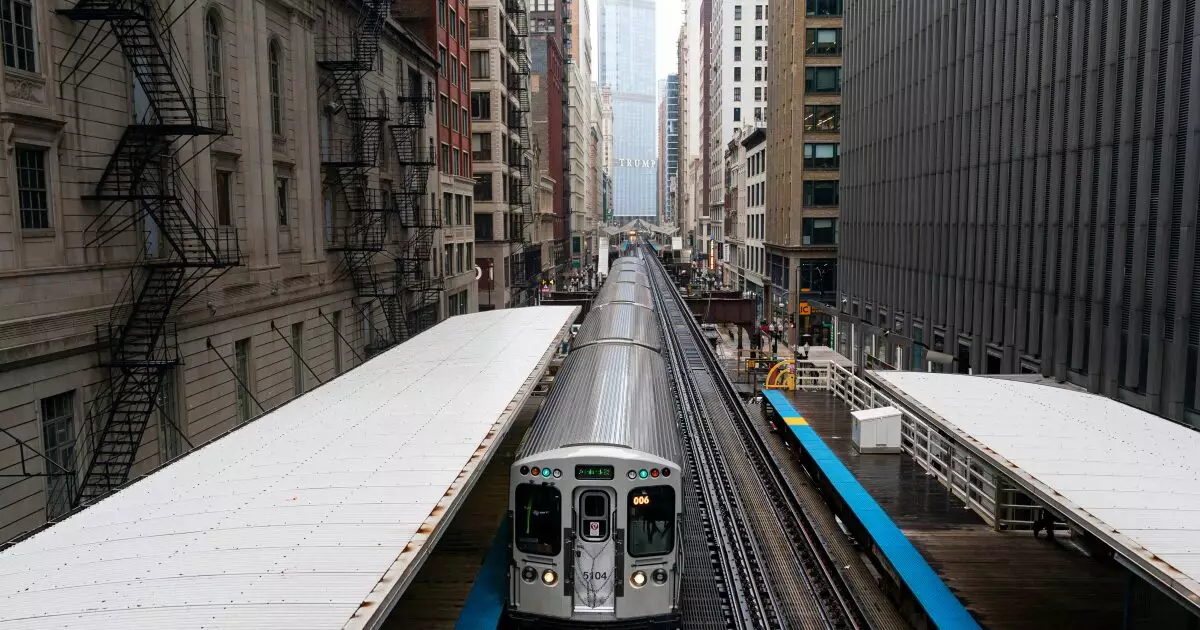The Chicago Transit Authority (CTA) has found itself in a precarious situation, with Moody’s recently revising its credit outlook to negative from stable. The implications of this shift are severe, particularly given that the CTA holds an A1 rating on a staggering $1.9 billion worth of outstanding senior lien sales tax bonds. This is not merely an isolated financial concern; rather, it encapsulates the broader malaise affecting public transport systems across the United States.
According to Moody’s credit opinion, the CTA will only evade operational collapse this year by depleting its federal pandemic relief funds. This raises critical questions about the CTA’s long-term sustainability. The agency anticipates an operating deficit of $550 million for fiscal year 2026, a staggering 25% of its operational spending. It raises a crucial point: if the CTA is counting on expiring federal relief to stay afloat, what happens when those funds vanish? The lack of a solid plan to generate revenue, alongside declining ridership, paints a grim picture.
The Inadequate Solutions from State Legislators
The need for new or expanded local taxes and state aid has never been more urgent. However, the solutions being tabled by state legislators seem more focused on governance restructuring rather than practical funding strategies. Proposed governance reforms promise a consolidation of public transit under a proposed Metropolitan Mobility Authority, which could complicate decision-making in an already beleaguered system. While the intention might be to streamline operations, it’s unclear if this change will address the immediate financial issues or provide any real operational efficiencies.
Meanwhile, there’s murmuring among transit agency heads that such governance reforms will lead to more bureaucratic tangles rather than solutions. Amidst this chaos, Regional Transportation Authority (RTA) proposals to secure $1.5 billion in operating funding only increase questions about funding sources. Are we seeing an overdue conversation about public transit funding or merely a collection of half-hearted attempts to correct years of negligence?
The Fare Dilemma: Sluggish Ridership and Pricing Policies
One pivotal factor contributing to the CTA’s woes is its pricing policies. Moody’s points out that many U.S. transit systems have refrained from making significant fare increases, largely due to decreased ridership metrics. For the CTA, the notion that raising fares could serve as a viable solution is wholly unrealistic, given that ridership remains slow to recover from pandemic declines. It’s as if the authority is trapped in a downward spiral: without adequate funding, operational quality declines, leading to even lower ridership.
The fundamental question is whether public transport can ever regain its status as a viable option for the everyday commuter without drastic changes. When fare revenue was already struggling to meet operating expenses pre-pandemic, why would fare increases to offset budget gaps even be considered? Such a strategy, if implemented, could push potential riders further away, jeopardizing future revenues further. Instead, deeper analyses should focus on alternative funding mechanisms or expanded service partnerships with private enterprises—not just tinkering with fare prices during a time of desperation.
The Uncertain Future and Major Risks
Moody’s has made it clear: a lack of state support for the CTA could lead to dire ramifications. Should the CTA’s long-term liabilities continue on their current trajectory, or its liquidity drop below 40 days of operating expenses, a downgrade in ratings is imminent. Such developments would cripple not only the CTA’s ability to attract future investment but could also threaten its ongoing operational capability.
Public transit does not exist in a vacuum; it is heavily interdependent with economic and community health. Striking the right balance between reliable service and sustainable funding is critical. Yet the hesitation within the Illinois legislature to act decisively puts all stakeholders at risk. As we navigate the overshadowing uncertainties of funding and governance, the message is clear: action is overdue, not just for the CTA but for public transit systems nationwide searching for stability in a post-pandemic world.
In this complex landscape, the voices advocating for reform must remember that change without a plan is simply chaos in disguise.

